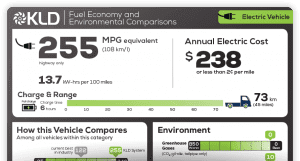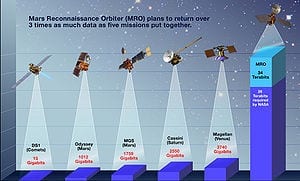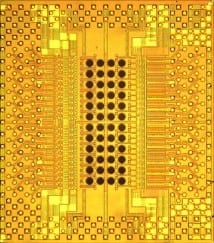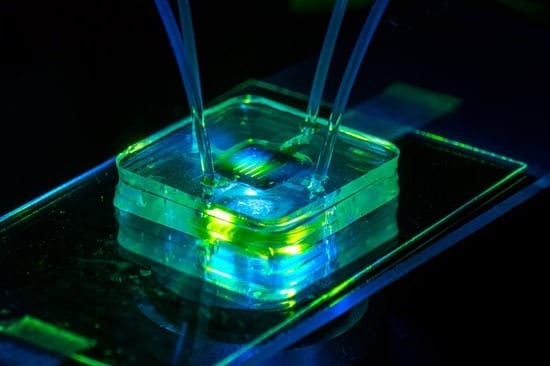“This is a breakthrough in the magnetic world.”
If only electric propulsion could operate at low voltage, maximize the motor’s performance and do without the cumbersome array of batteries. That’s the proposition advanced by KLD Energy Technologies of Austin, Tex., which suggests that it has come up with the next great innovation in electric-vehicle powertrains.
Kicking off a Southern California media tour to showcase the oneDrive system the company introduced in June, Christian Okonsky, KLD’s founder and chief executive, and Ray Caamano, its chief scientific officer, expressed high expectations for the company, which is named for Mr. Okonsky’s sons, Keil, Luke and Dean. To demonstrate what KLD is capable of, the two men brought along three vehicles fitted with oneDrive: a scooter, a small utility truck styled like the Volkswagens Mr. Caamano has always loved and – just in time for Halloween – a two-seat rolling chassis nicknamed the Skeletor.
The Skeletor is what’s known as a neighborhood electric vehicle, which is a class unto itself, distinct from golf carts.
Mr. Okonsky, 49, is an engineer who worked for Dell, and is leading KLD’s adoption of regionalized production by contract manufacturers, patterned after Dell’s own method. Mr. Caamano, 50, is an inventor who claims 28 patents, most pertaining to the motor at the heart of KLD’s oneDrive integrated electric power system. KLD has 20 employees in Austin and 10 more at its Morgan Hill, Calif., research facility.
Mr. Okonsky and Mr. Caamano first recognized kindred spirits in each other some years ago when discussing their admiration for Nikola Tesla.
“We raised a lot of money to develop our technology over five years, and literally this month is the first that we’ve started shipping product,” Mr. Okonsky said in an interview.
Mr. Caamano worked on Volkswagens after high school, perhaps informing the Skeletor’s compact rear-mounted drive system. It uses direct drive, with halfshafts supplying the power unit’s motive force to each rear wheel. Two motors, linked by an electronically controlled differential, are paired inside a drum, and master and slave controllers are mounted on top. A small battery pack supplied by Samsung is sandwiched under the seats. KLD created its own power-management software.
Mr. Caamano said that California’s air pollution problems in the 1970s instilled in him a deep revulsion toward internal combustion that oriented him toward electric drive. He said he had spent 20 years working out his thoughts on oneDrive.
On KLD’s website, specifications for the neighborhood electric vehicle based on the Skeletor chassis list a top speed of 25 miles per hour and range of 24 miles from the 3.12-kilowatt-hour battery pack. In a test on local streets, the Skeletor accelerated smoothly and ran quietly, although its vaporous steering would have been rejected by a clown car manufacturer.
Go deeper with Bing News on:
Electric propulsion
- Wright Builds Megawatt-Scale Electric Engine Cell
U.S. startup Wright Electric has begun building a test cell to characterize the performance of its megawatt-scale electric propulsion systems for large commercial aircraft. Located in Albany, New York ...
- VoltAero Begins Hybrid-Electric Powertrain Testing
French startup VoltAero has begun bench testing of the integrated parallel hybrid-electric powertrain for its five-seat Cassio 330. The ground-based runs are underway at the Bayonne, France, facility ...
- Fully Electric 2025 Mercedes-Benz G 580 Debuts As Cadillac Escalade IQ Rival
The new G 580 brings with it the same iconic boxy shape, luxury-laden interior, and off-road-ready capabilities as the ICE-powered G-Wagen, but with a generous helping of all-electric propulsion ...
- ZeroAvia offers electric and hydrogen tech to other aviation innovators
ZeroAvia has announced it will be offering some of its key components designed for its hydrogen-electric engines to other clean aviation innovators.
- Wright Electric Announces First Steps of Electric Propulsion Testing
Wright Electric, a world leader in electric propulsion for large commercial aircraft, today announced the launch of its Wright Electric Aircraft Engine Test Cell (WEAETC). The WEAETC is designed to ...
Go deeper with Google Headlines on:
Electric propulsion
[google_news title=”” keyword=”electric propulsion” num_posts=”5″ blurb_length=”0″ show_thumb=”left”]
Go deeper with Bing News on:
Magnetic technology
- Nintendo Switch 2 rumored to feature new magnetic Joy-Cons
According to a new Nintendo Switch 2 rumor, the new console will be larger than the old model with magnetic Joy-Cons.
- Enhancing memory technology: Multiferroic nanodots for low-power magnetic storage
Traditional memory devices are volatile and the current non-volatile ones rely on either ferromagnetic or ferroelectric materials for data storage. In ferromagnetic devices, data is written or stored ...
- Rumor: Nintendo Switch 2 Could Have Magnetic Joy-Cons
A rumor claims that the next Nintendo console could have magnetic Joy-Cons, replacing the rail system used by the current Switch Joy-Cons.
- Anker Magnetic Battery, Now 50% Off
Of course, purchasing from Amazon also means that you get Anker's worry-free 24-month warranty and friendly customer service. The package includes the Anker 622 Magnetic Battery (MagGo), a 23.6-inch ...
- Revolutionizing memory technology: multiferroic nanodots for low-power magnetic storage
However, generating and manipulating magnetic fields is energy-intensive ... Professor Masaki Azuma and Assistant Professor Kei Shigematsu from Tokyo Institute of Technology in Japan has successfully ...
Go deeper with Google Headlines on:
Magnetic technology
[google_news title=”” keyword=”magnetic technology” num_posts=”5″ blurb_length=”0″ show_thumb=”left”]












